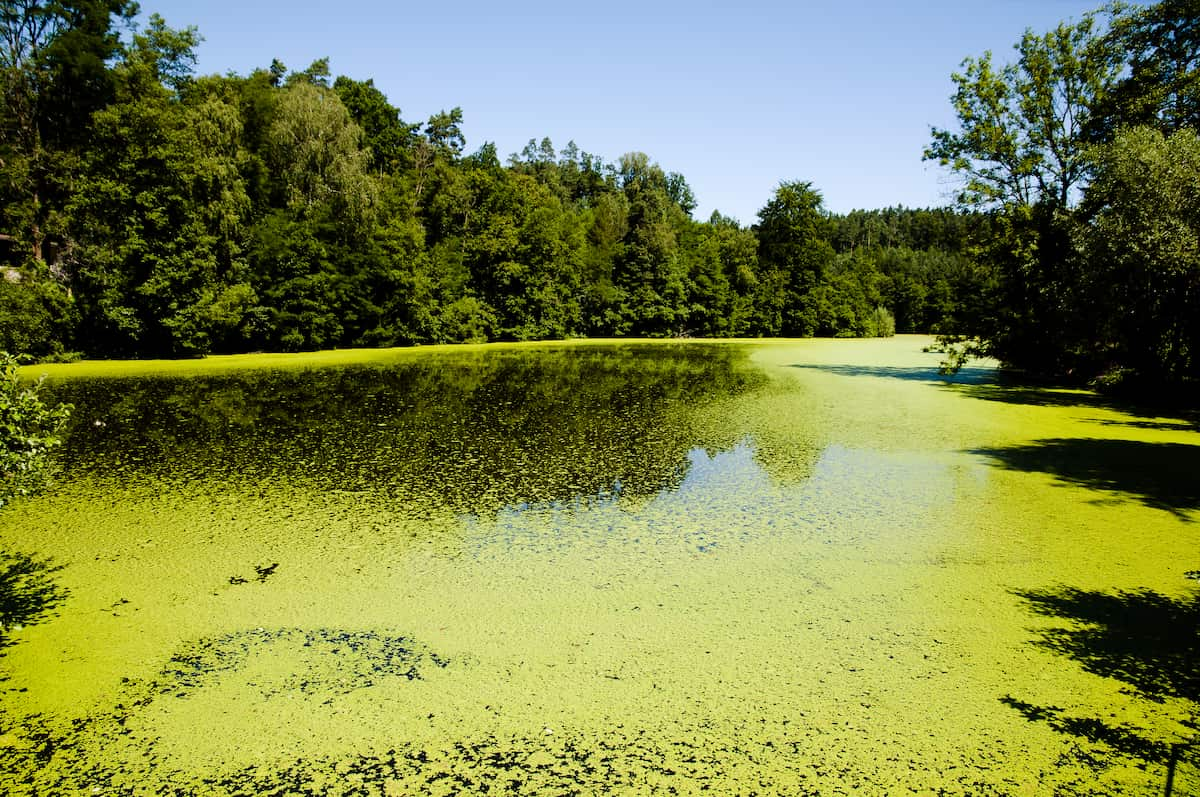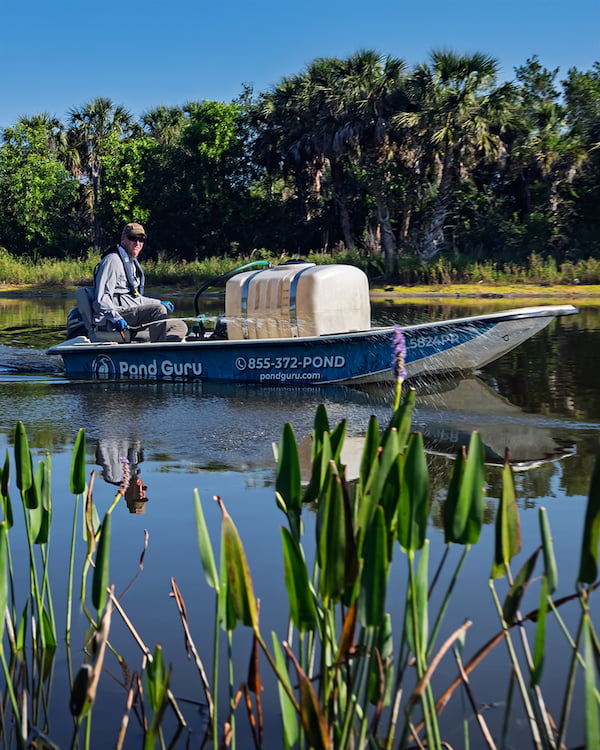Pond algae is one of the most common — and frustrating — challenges forpond and lake owners. Whether you manage a golf course, run an HOA, or own a private estate with a large water feature, you’ve likely searched for how to get rid of pond algae without killing fish. The goal is simple: clear, healthy water without harming your aquatic life.

In this guide, we’ll walk you through safe and effective pond algae controlstrategies, including what works, what doesn’t, and how to identify the right method based on the type of algae. We’ll also explain what kills algaenaturally, what eats algae in a pond, and how lake management serviceslike those offered by Pond Guru can help restore your pond’s balance.
Before we get into how to get rid of algae in a pond, it’s important to know what kind of algae you’re dealing with. Algae isn’t always bad — but when it gets out of control, it becomes a problem.
Excess algae growth usually points to nutrient overload, poor circulation, or lack of natural filtration. Without proper management, algae can deplete oxygenand stress — or even kill — your fish.

If you’re wondering how to get rid of algaewithout harming aquatic life, it’s all about choosing the right method for your pond’s ecosystem. Avoid harsh chemicals or overuse of algaecides that can cause oxygen crashes or disrupt beneficial bacteria.
Excess nitrogen and phosphorusfuel algae blooms. The most common sources include:
Use shoreline buffers, minimize fertilizer use near water, and routinely remove organic matter to control nutrient input.
Installing a bottom-diffusedaeratoror surface fountainincreases oxygen levels and disrupts stagnant water, making it harder for algae to thrive. Proper aeration is especially important in larger ponds and lakes where dead zones form easily.
Applying beneficial bacteriaand enzyme products helps outcompete algae for nutrients. These are safe for fish and promote long-term water clarity without chemicals.
Look for natural formulations labeled as:
If you’re looking for how to get rid of algae in pond naturally, these methods focus on prevention and ecosystem balance.
Floating and submerged aquatic plants absorb excess nutrients and shade out algae. Choose:
These plants also provide shelter for fish and enhance pond aesthetics.
When decomposed, barley straw releases compounds that can inhibit algae growth. It’s a low-impact, long-term control method used in commercial lake algae controlsettings and backyard ponds alike.
Wondering what eats algae in a pond? Stocking your pondwith the right species can help maintain balance:
These algae grazers reduce overgrowth and contribute to a more natural control strategy.

Many people search for what kills algaefast, but some products do more harm than good. Copper-based algaecides, for instance, are effective but can be dangerous in high concentrations — especially for koi or sensitive species.
Safer solutions include:
Always follow dosage guidelines carefully, and never apply treatments during the heat of the day or when oxygen levels are low.
For large properties — such as golf courses, HOAs, or estate homes — algae management requires more than just spot treatments. That’s where professional lake management serviceslike Pond Guru come in.
Ongoing monitoring and prevention programsto ensure long-term results

If you’ve been struggling with murky water, floating mats, or green scum, it’s time to take action — the right way. At Pond Guru, we specialize in commercial lake algae controland natural pond algae controlsolutions that protect your fish and restore beauty to your waterbody.
Schedule a site evaluationwith our expert team to:
We proudly serve private homeowners, HOAs, golf courses, and property managers throughout the region. Let’s bring your pond back to life — without harming what’s in it. Learn more about our services by checking our other blogs.
Aeration, beneficial bacteria, and natural treatments like barley straw or low-impact algaecides can reduce algae safely.
Use aeration, aquatic plants, biological treatments, and introduce algae-eating fish where permitted.
Too much algae can deplete oxygen, especially during die-off, leading to fish stress or death. Some types (like blue-green algae) can also be toxic.
Fish like grass carp and tilapia, as well as snails and certain invertebrates, help control algae naturally.
A professional team like Pond Guru offers algae identification, safe treatment options, and long-term management plans to prevent regrowth.
fish, water, pond, pump, koi pond, plant, algae, water garden, waterfall, aquatic plant, drainage, debris, flood, garden, bacteria, filtration, koi, ecosystem, soil, lake, landscape, water quality, maintenance, fountain, inspection, construction, nutrient, beauty, oxygen, ph, lighting, garden pond, stormwater, stream, plumbing, gravel, aquascaping, aquatic ecosystem, maintenance services, renovation, water treatment, fish pond, sludge, nitrate, fish kill, aesthetics, hardscape, pond cleaning service near me, pond cleaners near me, koi pond cleaning near me, fish pond cleaning service, pond cleaning company, small pond cleaning service, fish pond cleaning, pond servicing, cleaning pond algae, clean up a pond, pond cleaning service, pond cleaning, koi pond cleaning, koi pond cleaning service, pond clean out, ice, leaf, matter, wetland, organic matter, tank, decomposition, chlorine, pressure, fresh water, ammonia, request, water maintenance, water filter, water clarity, tap water, animal, garden hose, aeration, wildlife, swimming pool, rain garden, cleaner, waste, clay, barley, garden design, hose, green